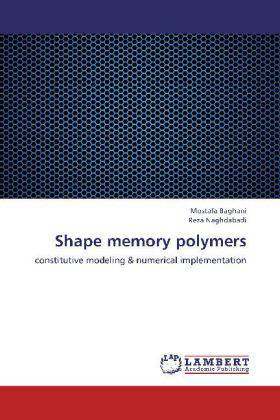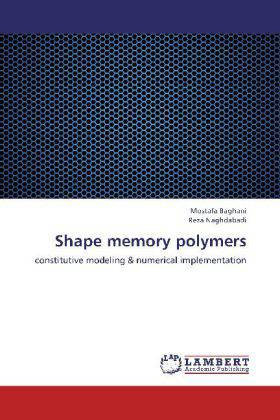
Je cadeautjes zeker op tijd in huis hebben voor de feestdagen? Kom langs in onze winkels en vind het perfecte geschenk!
- Afhalen na 1 uur in een winkel met voorraad
- Gratis thuislevering in België vanaf € 30
- Ruim aanbod met 7 miljoen producten
Je cadeautjes zeker op tijd in huis hebben voor de feestdagen? Kom langs in onze winkels en vind het perfecte geschenk!
- Afhalen na 1 uur in een winkel met voorraad
- Gratis thuislevering in België vanaf € 30
- Ruim aanbod met 7 miljoen producten
Zoeken
Shape memory polymers
constitutive modeling & numerical implementation
Mostafa Baghani, Reza Naghdabadi
Paperback | Engels
€ 67,45
+ 134 punten
Omschrijving
Shape memory polymers commonly experience both finite deformations and arbitrary thermomechanical loading conditions in engineering applications. This motivates the development of 3D constitutive models within the finite deformation regime. In the present work, based on the principles of continuum thermodynamics with internal variables, a 3D finite deformation phenomenological constitutive model is proposed. In the constitutive model derivation, a multiplicative decomposition of the deformation gradient into elastic and inelastic stored parts (in each phase) is adopted. Moreover, employing the mixture rule, the Green-Lagrange strain tensor is related to the rubbery and glassy parts. In the constitutive model, the evolution laws for internal variables are derived during both cooling and heating thermomechanical loadings. Further, we present the time-discrete form of the proposed constitutive model in the implicit form. Using the finite element method, we solve several boundary value problems i.e., shape memory effect in stents and 3D beams made of shape memory polymers and investigate the model capabilities as well as its numerical counterpart.
Specificaties
Betrokkenen
- Auteur(s):
- Uitgeverij:
Inhoud
- Aantal bladzijden:
- 172
- Taal:
- Engels
Eigenschappen
- Productcode (EAN):
- 9783659200922
- Uitvoering:
- Paperback
- Afmetingen:
- 150 mm x 220 mm

Alleen bij Standaard Boekhandel
+ 134 punten op je klantenkaart van Standaard Boekhandel
Beoordelingen
We publiceren alleen reviews die voldoen aan de voorwaarden voor reviews. Bekijk onze voorwaarden voor reviews.









